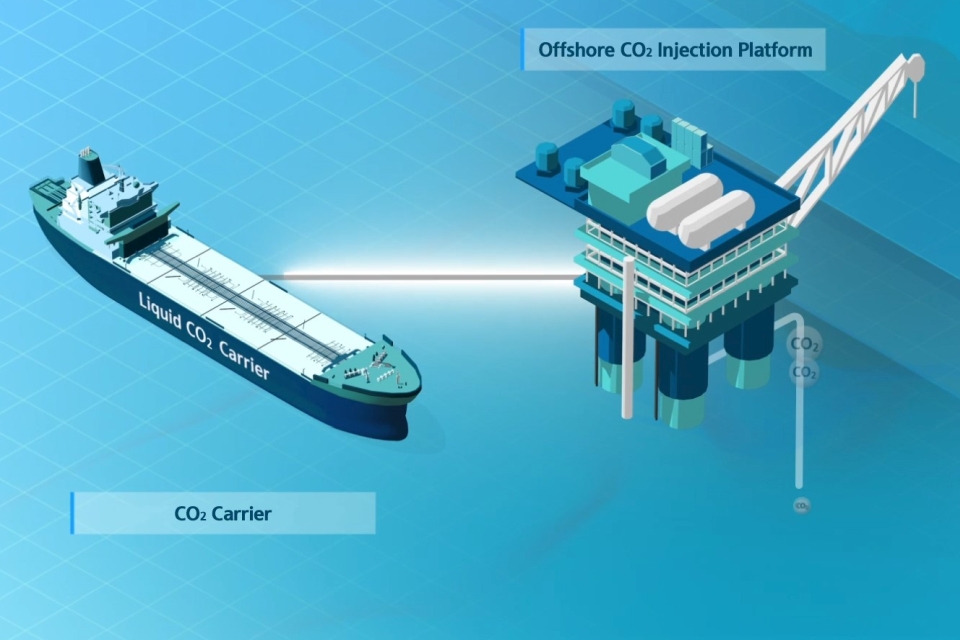Carbon capture and storage is gaining traction and liquefied CO2 carriers will be needed for transport. Hyundai Heavy Industries and Korea Shipbuilding & Offshore Engineering have come up with a design for such a vessel. With its 40,000-m3 capacity, it is much larger than current carriers, which are limited to less than 2000 m3.
The 40,000-m3 class liquefied CO2 (LCO2) carrier is 239 metres long, 30 metres wide, and has a depth of 21 metres. The vessel will be equipped with seven IMO type-C cargo tanks with a total capacity of 40,000 m3. It is designed to carry LCO2 cargo only, but multi-cargoes such as LPG or ammonia can also be considered. Classification society DNV and the Liberian International Ship & Corporate Registry (LISCR) awarded the approval in principle.
Also read: ‘Reducing shipping emissions starts with wind power and carbon capture’
‘Obtaining the AiP for this innovative large scale LCO2 carrier is a meaningful technological milestone,’ says Won-Ho Joo, senior executive vice president and chief technical officer at Hyundai Heavy Industries (HHI). ‘We believe our self-developed LCO2 carrier will contribute to global decarbonisation efforts by providing tailor-made designs according to each ship owner’s specific requirements.’
Thomas Klenum, senior vice president of Maritime Operations, who led LISCR’s review and approval process, adds: ‘This project will be very important for the design and capabilities of the LCO2 fleet of the future.’
Also read: Neptune plans to capture CO2 in depleted Dutch North Sea gas fields
Picture by Korea Shipbuilding & Offshore Engineering.








